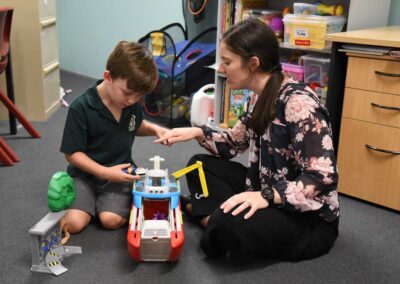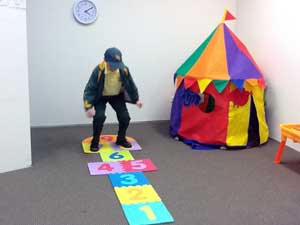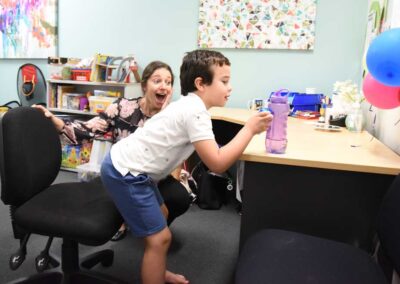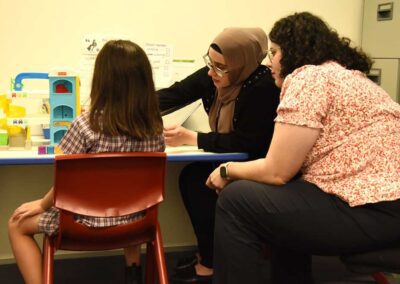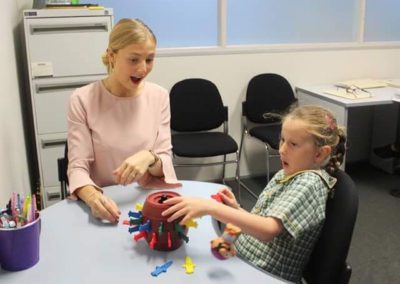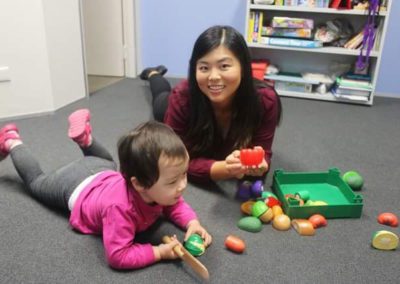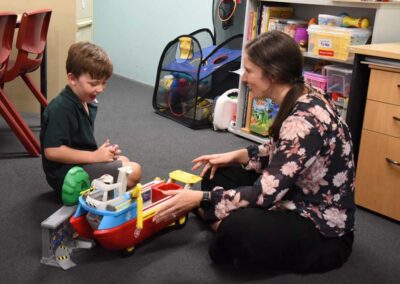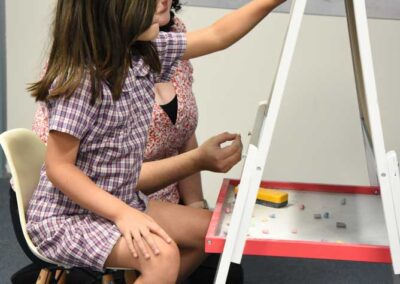Programs to suit your child’s needs

What is Literacy?
Learning to read and write is a fundamental part of a child’s development and an essential skill for adults. Sound reading and writing (literacy) skills allow children and adults to fully engage and participate in education and learning. They also allow us to respond to written questions, follow written instructions, steps and procedures, search online and in books for information, compose letters and emails, and send text messages to friends, family and colleagues. Reading and writing is an essential part of our lives from the time we start school.
What can a speech pathologist do to help?
Speech pathologists help strengthen literacy skills by developing a child’s phonological and phonemic awareness. This is the ability to hear sound in words and manipulate (i.e., change) sounds in a word to form new words.
We teach children how to use word attack skills by blending sounds together when reading (e.g. b – u – s = bus) or to segment words into sounds when writing (e.g. bus = b – u – s). We use a systematic synthetics phonics approach.
We also work on:
- reading comprehension: in addition to helping your children become capable and proficient readers, we also help children engage with what they are reading by
understanding the meaning behind a text. Being able to answer concrete questions, answer inferential questions and understand implied meaning is a key part of the school curriculum. - written language: we teach children how to write grammatically correct and complex sentences. We then build on sentences to write structure paragraphs and then various text types (e.g., narratives, persuasives).
What is Systematic Synthetics Phonics?
This is an evidence-based, structured approach to teaching children to read. Children learn how to represent speech sounds (phonemes) as letters (graphemes). There are 44 speech sounds/phonemes in the English language with only 26 letters/graphemes to represent them, so some sounds are visually represented with one letter (e.g. ‘t’), while others are represented by a combination of two or more letters, e.g. the letters ‘sh’ represent one sound. The relationship between these letters and sounds is called grapheme-phoneme correspondence. Children need to be able to match the speech sound with the corresponding symbol or symbols in order to start reading and spelling.
When using a systematic synthetics phonics program, a child first learns individual sounds and then learns to blend, or ‘synthesise’ these sounds together to form words. For example a child will learn the sounds that are represented by the letters ‘m’, ‘o’ & ‘p’ and then learns to blend these sounds together to form the word ‘mop’. This ability to recognise sounds and blend them together is known as ‘decoding’. In reverse, a blended word can be broken up into its individual sounds to spell a word and this is known as ‘encoding’.
As children move through the grades, they need to learn more complex grapheme-phoneme correspondence such as diagraphs (e.g. ai, ee, ou, or) and trigraphs (e.g. igh, tch, ear) in order to decode & encode words correctly.
At Speak, Learn & Grow, all of our therapists use a Systematic Synthetics Phonics approach to teach reading and spelling and we see the incredible results that this evidence-based approach has on a child’s literacy skills and confidence.

